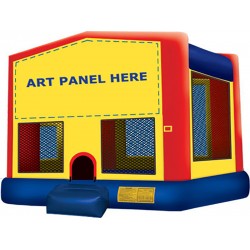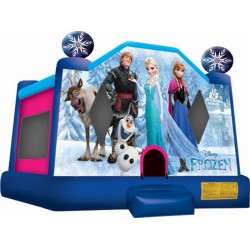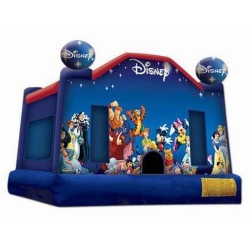How to Handle Weather-Related Challenges When Using a Bouncy Castle?

Weather conditions can significantly impact the safety and functionality of a bouncy castle. Whether you're planning an outdoor event or dealing with unexpected weather changes, it's essential to be prepared and address any weather-related challenges effectively. This article provides guidance on how to handle various weather-related issues when using a bouncy castle.
1. Handling Rain and Wet Conditions
Rain and wet conditions can create hazardous environments for bouncy castles:
- Avoid Setup on Wet Ground: Do not set up a bouncy castle on wet or muddy ground as it can become slippery, increasing the risk of accidents.
- Use Tarps and Covers: If rain is expected, use waterproof tarps or covers to protect the bouncy castle from getting soaked. Ensure the covers are securely fastened and do not interfere with the operation of the blower.
- Monitor for Leaks: Regularly check for any leaks or water accumulation inside the bouncy castle and address them immediately to prevent damage and maintain safety.
2. Dealing with Strong Winds
Strong winds can pose a risk to the stability of the bouncy castle:
- Secure Anchoring: Ensure that the bouncy castle is properly anchored using stakes or weights designed for windy conditions. Follow the manufacturer's guidelines for securing the equipment.
- Monitor Wind Conditions: Regularly check wind speeds and be prepared to deflate and remove the bouncy castle if winds exceed safe limits. Avoid using the bouncy castle during severe wind conditions.
3. Managing Extreme Heat
Extreme heat can affect both the bouncy castle and its users:
- Provide Shade: Set up the bouncy castle in a shaded area to protect it from direct sunlight, which can cause overheating and damage the materials.
- Ensure Proper Ventilation: Make sure there is adequate airflow around the bouncy castle to help with cooling. Avoid placing it in enclosed or poorly ventilated spaces.
- Hydrate and Rest: Ensure that children playing in the bouncy castle stay hydrated and take breaks to prevent overheating and dehydration.
4. Addressing Cold Temperatures
Cold weather can also impact the performance and safety of the bouncy castle:
- Use Insulated Materials: Choose a bouncy castle made from materials that are designed to withstand colder temperatures and maintain their flexibility in the cold.
- Avoid Icy Surfaces: Ensure that the area around the bouncy castle is free from ice and snow to prevent slipping and ensure stable footing.
- Check Inflation: Cold temperatures can affect inflation levels. Regularly check that the bouncy castle is properly inflated and adjust as needed.
5. Planning for Unpredictable Weather
Unpredictable weather changes require flexibility and preparedness:
- Have a Contingency Plan: Plan for alternative arrangements in case of sudden weather changes, such as moving the event indoors or rescheduling.
- Monitor Weather Forecasts: Keep an eye on weather forecasts leading up to the event and make adjustments based on the expected conditions.
- Prepare for Quick Adjustments: Be ready to make quick decisions regarding the setup or removal of the bouncy castle based on real-time weather conditions.
6. Conclusion
Handling weather-related challenges when using a bouncy castle requires careful planning and proactive measures. By addressing issues related to rain, strong winds, extreme heat, cold temperatures, and unpredictable weather, you can ensure a safe and enjoyable experience for all participants. Always prioritize safety and be prepared to adapt to changing weather conditions to maintain the integrity of the bouncy castle and the well-being of its users.



